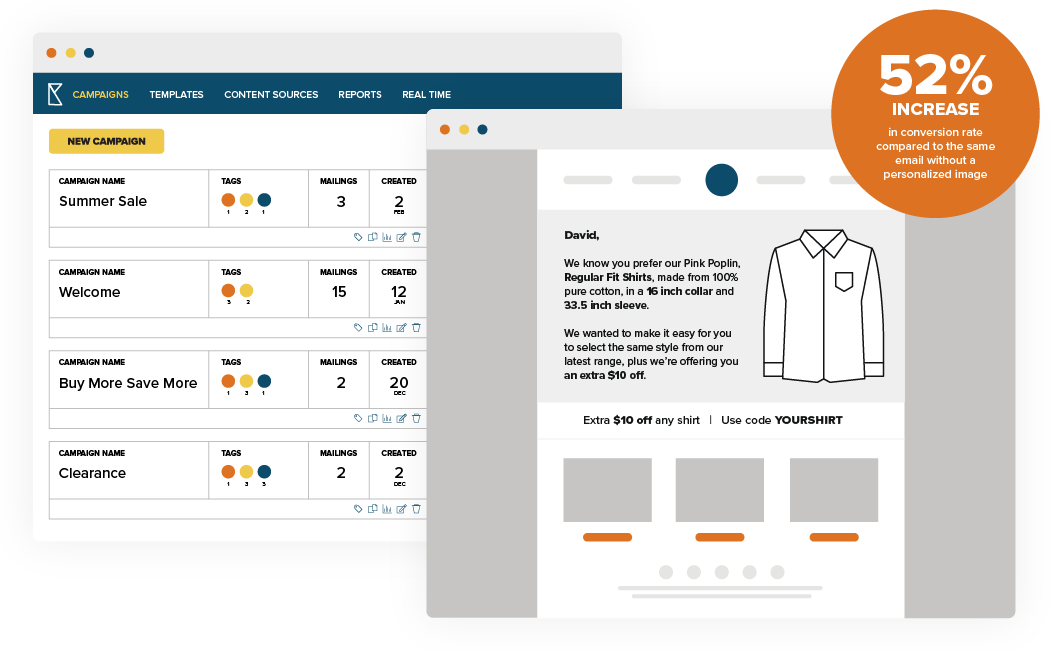Defining the 4 Types of Data and Knowing When to Use Them
When you click send on your email campaign, your goal is pretty straightforward. You want your message to get to the right inbox, be opened, and have some specific action taken. While none of this is a simple task, it is important to take a step back before focusing on the end goal of getting the recipient to convert.
As digital marketing becomes increasingly reliant on data, email is no exception. However, determining what types of data to utilize and when can be a more complex process. For email marketers, it’s important to understand the data you have accessible and know how and when to use it most effectively.
We have outlined the four types of data and what each can mean for your email strategy.
Zero-party data
Zero-party data Individual-level data explicitly given to you directly from your audience |
Gaining customer insights is always helpful for successful marketing. However, what better way to collect necessary details to improve your reach and messaging than by doing the obvious, asking your audience directly? When you ask them to intentionally share their personal preferences, purchase intentions, and other helpful information, they feel valued and that’s good for business.
By utilizing zero-party data, you’re not only allowing recipients to have an interactive experience but you’re also creating brand trust that encourages further participation with the understanding that you’ll use it appropriately. After all, your brand experience is now considered to be as important as your products and service so this process is a win-win.
What makes zero-party data imperative is you can’t infer, buy, or collect it elsewhere, making it exclusive to your business to leverage. Better yet, it doesn’t have to be complicated. In fact, most people will gladly provide more information about themselves if they believe it will benefit them. This can be as simple as inquiring about specific shopping habits, inquiring more about product selection(s), communication preferences, or asking direct questions with the information you are seeking.
First-party data
First-party data Individual-level data collected from your audience on your own channels |
You are likely already collecting some key first-party data, such as names, email addresses and demographic information that you can utilize. Methods such as encouraging users to create an account, rather than just supplying an email, or tracking website behavior, and account activity like purchase history can help you develop customer profiles to provide more personalized experiences. In fact, many companies have access to more useful first-party data than they might initially think—it just requires some extra attention and being able to connect the dots across data points.
Better understanding how users prefer to transact and engage with your brand can be invaluable information. The collection of first-party data allows you to identify ideal customer profiles and set the stage for better segmentation and targeting. By taking a full inventory of the data you already have, you can consider how this information can be used more extensively.
As data privacy continues to be a priority, people are more inclined to provide more information with only those businesses they trust to secure and use it properly. It’s important to be transparent about your data collection intentions and security early and often.
Second-party data
Second-party data Individual-level data acquired from a trusted partner, aka someone else’s first-party data |
Second-party data is all about collaboration. It’s data a user has willingly shared with a trusted company or publisher that you have permission to access and use. That being said, it has an increased element of accuracy and as a partner, you are accountable for using it wisely.
Obtaining these details can take a variety of forms. Methods such as co-marketing efforts, customer reviews on products and services, or loyalty programs outside of your own are just a few examples. With third-party data on its way out, second-party data is a reliable addition to your database. It also provides additional scale for audience expansion and engagement that can greatly help your campaign strategies.
Third-party data
Third-party data Aggregate data collected from one or more sources |
If you’re using third-party data, you should start considering expanding your resources—and in a hurry. As the death of the cookie looms, it’s important to start focusing your efforts on the data points listed above.
However, third-party data does have its benefits. While it’s still accessible, it allows you to reach new audiences and shoppers to increase your subscriber list. On the flip side, there can be questions around data integrity—mainly in that consumers are not aware you have been given access to their information and could be unhappy that you’re reaching out. It’s a fine line but if done properly, it has its advantages.
Third-party data can include a multitude of data collection points such as consumer visits and browsing activity via cookie, survey responses from outside sources, or behaviors and activities tracked outside of your organization. It’s typically collected from a variety of places and then aggregated by a third-party data provider into a more comprehensive format that includes audience profiles.
Next steps
With the changing digital landscape, data will continue to be a marketer’s friend. However, using the right data can make or break the success of your campaign. Before you hit send, be sure to carefully assess you’ve chosen the right audience to meet your desired outcome.

| Create individualized email experiences at scale Get powerful results with uniquely personalized, engaging email experiences that boost customer loyalty and drive revenue with Litmus Personalize, powered by Kickdynamic. |

Maria Coleman
Maria Coleman was a Senior Content Marketing Manager at Litmus
